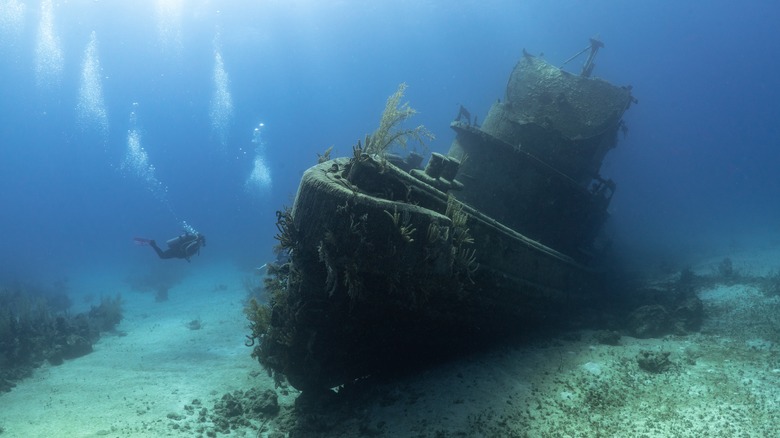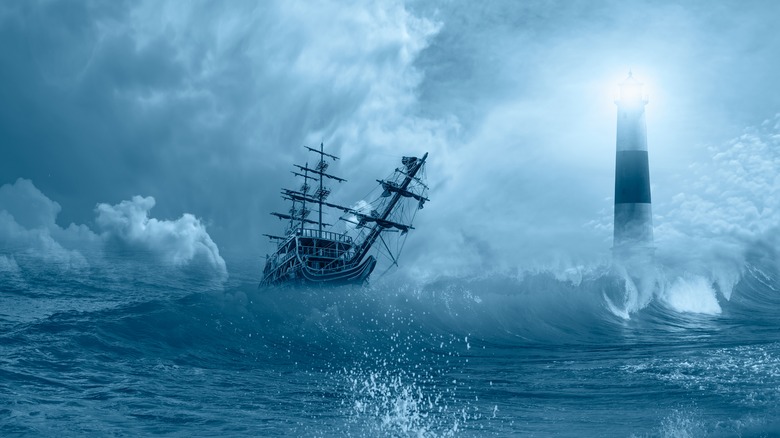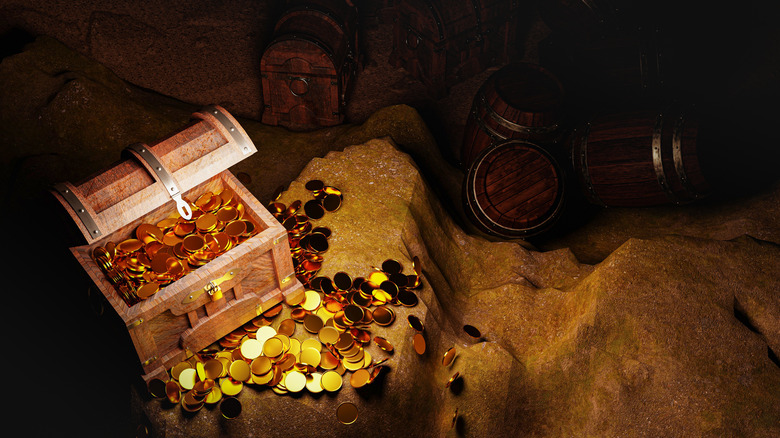How Priceless Artifacts From A 350-Year-Old Spanish Shipwreck Might Reveal The Vessel's Fate
Shipwrecks are a fascinating topic to many people. The common image of them might include tales of piracy, supernatural ghost ships, or blockbuster movies like "Titanic." Either way, shipwrecks are endlessly interesting. According to Popular Mechanics, there are around three million shipwrecks lost in the oceans, but only a paltry 1% have been found. The National Oceanic and Atmospheric Administration tasks itself with documenting as many of these wrecks as it can, as it could help a lot in preventing future collisions. Ships traveling might inadvertently strike some of these, which could be quite disastrous. Still, due to the limitations of oceanographic technology, not all wrecks are able to be located.
But some are. Marine archeologists made one of the most exciting shipwreck finds in recent memory which will go on display at the Bahamas Maritime Museum in August 2022. As reported by CNN, a 350-year-old Spanish galleon ship by the name of the Nuestra Señora de las Maravillas had much of its lost and scattered cargo excavated from the ocean floor. The boat's name means Our Lady of Wonders in Spanish, and the ship sank sometime in 1656 in the Bahamas. The cargo, consisting of gems and other treasures, is one of the most successful excavations in history.
The Nuestra Señora de las Maravillas was a trading ship that sank after collision
The Nuestra Señora de las Maravillas was a Spanish trade ship designated to haul treasure from the Americas to Spain. As the Bahamas Maritime Museum explains, it was in use in the 1650s. It had made its trade between the two lands until it crashed into another ship, the Nuestra Señora de la Concepción, and sank to the bottom of the ocean. A navigational error was largely responsible for the collision, followed by a fatal strike with a coral reef.
The ship carried 650 people, the vast majority of which were never found, meeting their untimely end in the sea. As for the cargo, much of it was scattered and tossed to the seas, like many other shipwrecks. While remains of the wreck had been excavated multiple times before in the past, the most recent salvage is one of the most significant yet. As The Guardian says, the find runs counter to previously held notions that the wreck might not have much of anything left anymore.
The ship carried a lot of treasure, which was for King Philip IV's royal tax
Despite its notability, this is not the first excavation of the ship in history. As CNN says, there had previously been multiple expeditions to the shipwreck from the 1650s to the 1990s, but this latest one reveals much of the ship's life. One part of the mystery that researchers are still trying to solve is "reconstructing the mystery of how the ship was wrecked and fell apart," according to a press release from marine archaeologist James Sinclair (via CNN). This requires extensive reconstruction and marine archeology work to be done which is made possible through state-of-the-art technology involving magnetometers and sonar sensing technology.
The sunken bounty contained a myriad of jewels, coins, and gemstones of royal origin. Other items, such as emerald encrusted gold pendants and bejeweled religious ornaments, were also found. Some of the loot found could possibly hint at what the ship's routes were, and the countries it might have traded with or extracted from. Objects like olive jars and Chinese porcelain show the extensive diversity of the ship's travels. As Smithsonian Magazine explains, much of the finds from the Maravillas will be displayed in the Bahamas Maritime Museum.


